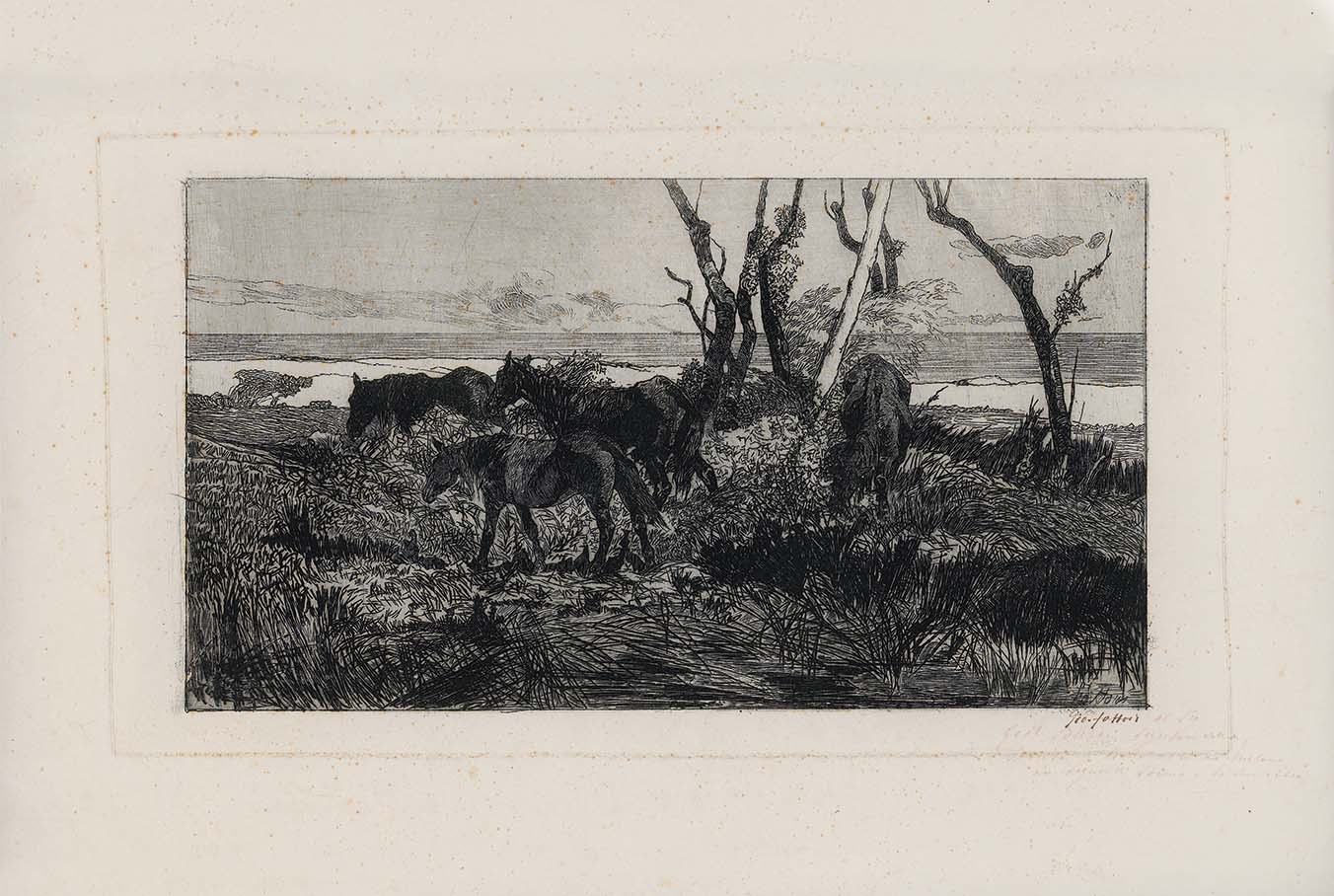Giovanni Fattori
Livorno 1825 - Firenze 1908
1883
245 x 441 mm; the sheet 436 x 625 mm
Bonagura 1976 no. 74; Baboni – Malesci no. CLXIV. Signed in pen with iron gall ink ‘Gio. Fattori’, dedicated in pen ‘al Sig. / Fed: Buzzi, segretario della / Società di Belle Arti di Milano / in segno di stima e di amicizia’.
Provenance: Lamberto Vitali (1896-1992).
The quality of the impression is extraordinary. The inking is very rich and thick. As often happens with early impressions of Fattori’s etchings when pulled on soft wove, the strong inking creates effects similar to embossing on the verso.
The print has been deeply personalized in inking. A remarkable surface tone has been left in the background, over the cloudy sky and the sea, while, on the contrary, the thin strip of beach and the tree in the center have been wiped off to enhance their brightness.
Finally the dedication is quite important because it allows us to be more precise in the dating of the etching, which until now was dated ante 1888, being the print in the group of 21 purchased by the Galleria Nazionale d’Arte Moderna in that date. The painter Federico Buzzi was secretary of the ‘Società di Belle Arti di Milano’ until 1883, when he became the secretary of the new born ‘Società per le Belle Arti ed Esposizione Permanente’. So this dedication demonstrates that the print was etched by 1883. The print has wide margins and, except for a minimal foxing, is in fine condition.
References:
M.C. Bonagura, Le acqueforti di Fattori della collezione Rosselli, Florence 1976
Baboni, G. Malesci, Giovanni Fattori l’opera incisa, Milan 1983.
Information on the master
Giovanni Fattori, possibly the most important painter of the nineteenth century in Italy, received his first instruction in drawing in Livorno. In 1846 he moved to Florence to attend the Academy. During the 1850s he joined the innovative artists, called 'Macchiaioli', who met in Florence at the Caffè Michelangelo and were champions of a new technique and style to contrast the conventional academic language. During those years, he still produced works that could be attributed to the historical-romantic school but his interest in studying from life also extended to landscape painting and the military life of the day became the subject of his first experiments in painting using the "macchia" technique. In 1867, after the death of his first wife, Fattori frequently stayed in the Maremma region, which became the ideal backdrop for his works. Fattori began etching in the early 1880s, when he was nearly sixty; quite soon he was able to appreciate the difference of expression he could achieve using this new medium. A real ‘peintre-graveur’, he improved with etching his research on light and essential shapes in reality.
